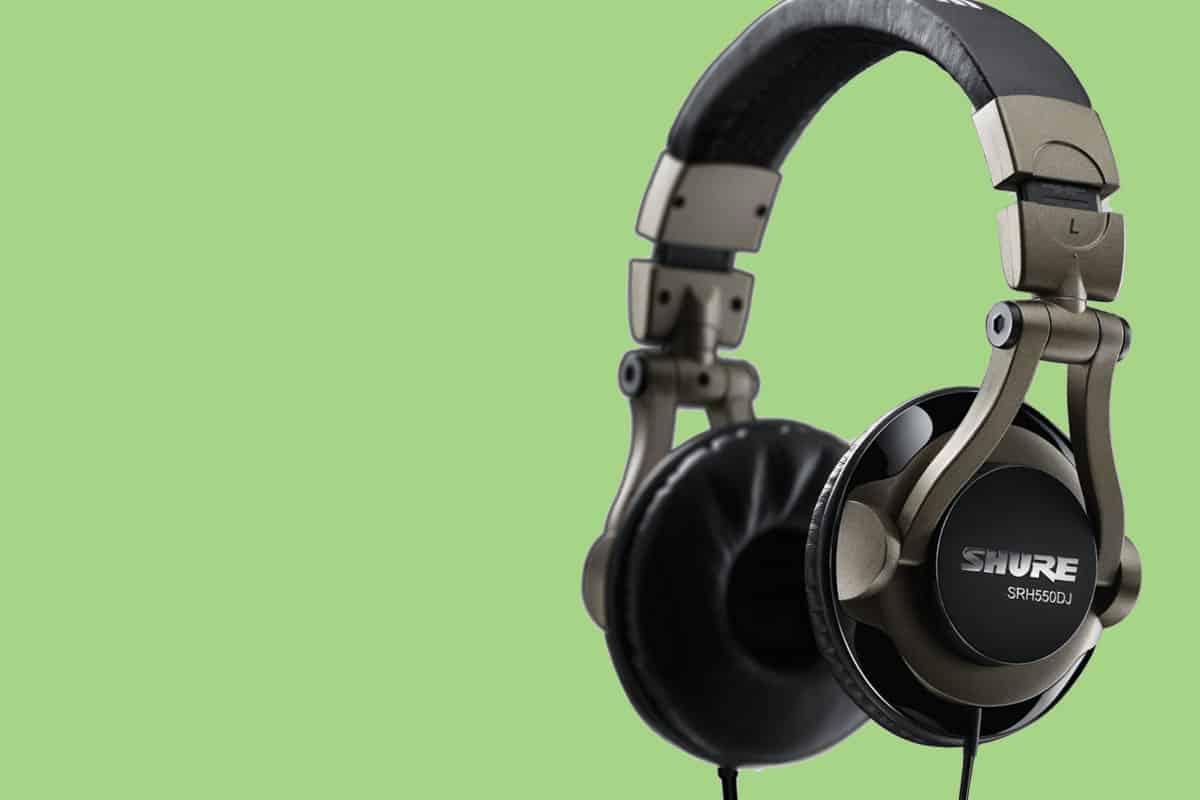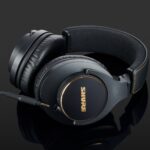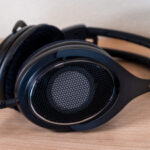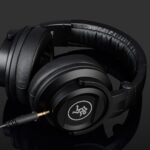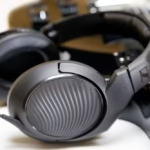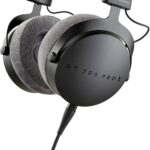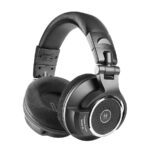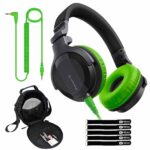Detailed review and audio testing of the Shure SRH550DJ headphones. Comprehensive analysis of sound quality, build, and comfort for DJ, music production, and casual listening applications.
Shure SRH550DJ Headphones Review: Affordable DJ Monitoring with Trade-offs
DJ headphones occupy a unique position in the audio equipment landscape, requiring durability for live performance while delivering frequency response tuned for specific monitoring challenges. The Shure SRH550DJ enters this competitive market as an affordable option, but does it deliver the performance and build quality expected from the Shure name?
Understanding DJ Headphone Requirements
Before examining the SRH550DJ specifically, understanding what distinguishes DJ headphones from studio monitors provides important context. DJ environments present challenges including high ambient noise levels, bass-heavy music that must be previewed accurately, and physical demands from transport and performance use.
Consequently, DJ headphones typically feature slight bass and treble boosts to compensate for environmental factors and genre-specific content. They should be lightweight yet durable, with comfortable designs suitable for extended wear. The SRH550DJ attempts to meet these requirements at an accessible price point.
Frequency Response Analysis
Comprehensive frequency testing using logarithmic analysis—which better represents human hearing than linear scales—reveals the SRH550DJ’s tuning philosophy. The measurements show slight boosts in both low and high frequencies, with midrange remaining relatively neutral and uncolored.
This frequency shaping aligns with typical DJ headphone characteristics, providing enhanced low-end monitoring and treble clarity without creating the scooped, hollowed-out midrange that undermines music quality. The boosts remain modest rather than extreme, suggesting these headphones aim for usable accuracy rather than hyped consumer-oriented sound signatures.
Linear analysis provides additional detail in upper frequency ranges, confirming the gentle high-frequency boost and low-end enhancement. These characteristics prove appropriate for DJ applications while remaining suitable for music production and casual listening across various genres.
Music Reproduction Across Genres
Moving beyond single-tone testing to complex musical content reveals how the SRH550DJ handles real-world material. Logarithmic comparison of music playback shows the anticipated characteristics: boost above approximately 5-6kHz and enhanced low frequencies below 180-200Hz.
Importantly, the frequency response curve generally follows the original material’s shape despite these modifications. This indicates the headphones color sound predictably rather than introducing random peaks and valleys that undermine tonal accuracy. Users can adapt to these characteristics with experience, making informed decisions about EQ and balance.
The linear comparison reinforces these observations, showing upper frequencies slightly elevated above the original curve with thickened low-end response. For music production work, these characteristics remain manageable, though users seeking absolute neutrality should consider alternatives. For DJ monitoring of electronic music, hip-hop, and other bass-forward genres, this tuning proves quite appropriate.
Spoken Word Performance
Voice monitoring capabilities matter for podcasters, content creators, and voice artists seeking versatile headphones. The SRH550DJ handles spoken word material reasonably well, with some important considerations.
The logarithmic analysis reveals a slight presence boost without the severe midrange scooping that makes some headphones unsuitable for voice work. The frequency curves follow each other faithfully through most of the vocal range, with low-frequency enhancement falling below typical speech fundamentals and thus having minimal impact on voice timbre.
The presence boost manifests as enhanced clarity and articulation—not inherently negative for monitoring applications where intelligibility matters. The SRH550DJ provides reasonable voice representation for podcast monitoring, voice-over evaluation, and similar applications, though dedicated studio monitors might offer slightly more neutral reproduction.
Linear analysis confirms the presence enhancement with minimal low-frequency impact on voice frequencies. For all-around headphones serving multiple purposes including voice work, the SRH550DJ proves competent if not exceptional.
Gaming Audio Evaluation
Many consumers seek headphones suitable for diverse applications including gaming. While not specifically designed for this purpose, the SRH550DJ delivers competent gaming audio performance with notable limitations.
The headphones reproduce game soundscapes adequately, providing reasonable spatial information and environmental awareness. The controlled bass response prevents muddiness that can obscure important audio cues in competitive scenarios. Directional audio and positioning register clearly enough for casual and moderate gaming use.
However, comfort limitations—discussed in detail below—significantly impact the gaming experience. Extended gaming sessions become uncomfortable due to ear pad design and heat accumulation, making these problematic for marathon gaming despite acceptable audio performance.
Build Quality Concerns
Build quality represents the most significant weakness in the SRH550DJ package. The entirely plastic construction generates considerable creaking and flexing during normal handling and adjustment. While this doesn’t necessarily indicate imminent failure, it inspires limited confidence in long-term durability—particularly disappointing from a manufacturer known for robust professional equipment.
The ear pads swivel 90 degrees for single-ear monitoring typical in DJ applications, though the mechanism’s audible creaking raises durability questions. Adjustments feature stepped positions that lock in place, ensuring consistent fit across multiple uses.
The permanently attached straight cable represents another controversial design choice. Fixed cables eliminate concerns about connection reliability but create replacement complications if damage occurs. For DJ headphones subject to cable abuse from stage movement and equipment interaction, detachable cables would provide more practical longevity. The lack of coiled cable options further limits DJ-specific usability, though Shure offers them separately.
One positive feature is the compact folding design that facilitates transport and storage. The headphones collapse into a relatively small package suitable for DJ bags and mobile production setups.
Comfort and Fit Issues
Comfort proves problematic with the SRH550DJ, significantly limiting their versatility. The ear pads use materials that generate excessive heat even during moderate listening periods—within ten minutes of use, warmth becomes noticeable and increasingly uncomfortable during longer sessions.
For DJ applications involving active performance and movement in warm club environments, this heat accumulation becomes genuinely problematic. For extended studio sessions, gaming marathons, or long listening periods, the discomfort escalates from minor annoyance to genuine impediment.
Users committed to the SRH550DJ for other reasons should consider aftermarket ear pad replacements as a near-essential modification. This additional expense and effort undermines the value proposition of these budget-oriented headphones.
Technical Specifications
The SRH550DJ features 32-ohm impedance with 109dB sensitivity, ensuring compatibility with virtually any source device without requiring dedicated amplification. Smartphones, tablets, computers, and DJ equipment all provide adequate power for proper listening levels.
The frequency response spans 5Hz to 22kHz—broader than the 20Hz-20kHz range of human hearing. This extended response contributes to the headphones’ ability to reproduce low-frequency content that’s felt as much as heard in DJ environments.
Value Analysis and Alternatives
At approximately at the time of evaluation, the SRH550DJ occupies the entry-level DJ headphone category. The modest pricing makes them accessible for beginners or users seeking backup headphones, but significant compromises accompany the affordability.
The audio quality proves quite good for the price—the frequency response characteristics suit DJ monitoring well without extreme coloration. However, the build quality concerns, permanently attached cable, and particularly the uncomfortable ear pads create meaningful drawbacks that undermine the value proposition.
Shure offers the SRH750DJ at higher price points, featuring detachable cables and different ear pad materials that address the SRH550DJ’s major weaknesses. For users serious about DJ applications or seeking headphones for extended use, the investment in the upgraded model likely provides better long-term value.
Target User Recommendations
The SRH550DJ suits specific use cases despite its limitations. Users seeking entry-level DJ headphones for learning, practice, or backup purposes will find adequate performance at accessible pricing. Music producers working with electronic music, hip-hop, or other bass-forward genres may appreciate the frequency response characteristics.
However, serious DJs performing regularly, professionals requiring reliable equipment, or anyone prioritizing comfort for extended use should consider alternatives—potentially including Shure’s own upgraded models. The ear pad comfort issue alone disqualifies these headphones for marathon sessions regardless of other merits.
For casual music listening in short sessions, the SRH550DJ proves perfectly adequate. The sound quality legitimately impresses for the price point, making them reasonable if users can tolerate or modify the comfort issues.
Final Verdict
The Shure SRH550DJ demonstrates that affordable DJ headphones require careful compromise evaluation. The audio quality succeeds admirably—frequency response characteristics suit DJ monitoring well while remaining versatile enough for music production and casual listening. At the price, the sound quality represents genuine value.
Unfortunately, build quality concerns and especially the problematic ear pad comfort prevent unreserved recommendation. The all-plastic construction raises long-term durability questions, the fixed cable limits serviceability, and the uncomfortable ear pads create genuine impediments to extended use.
Users specifically seeking budget-friendly DJ headphones for occasional use may find the SRH550DJ acceptable despite these compromises. However, most users would benefit from either saving for Shure’s upgraded models or exploring competitors offering better overall packages at similar or slightly higher prices.
In professional and prosumer markets, Shure has earned its reputation for quality and durability. The SRH550DJ suggests that extreme value engineering for entry-level pricing forces compromises that undermine the brand’s strengths. For users valuing the Shure name specifically, investing in the company’s higher-tier offerings makes more sense than settling for the limitations inherent in the SRH550DJ.


